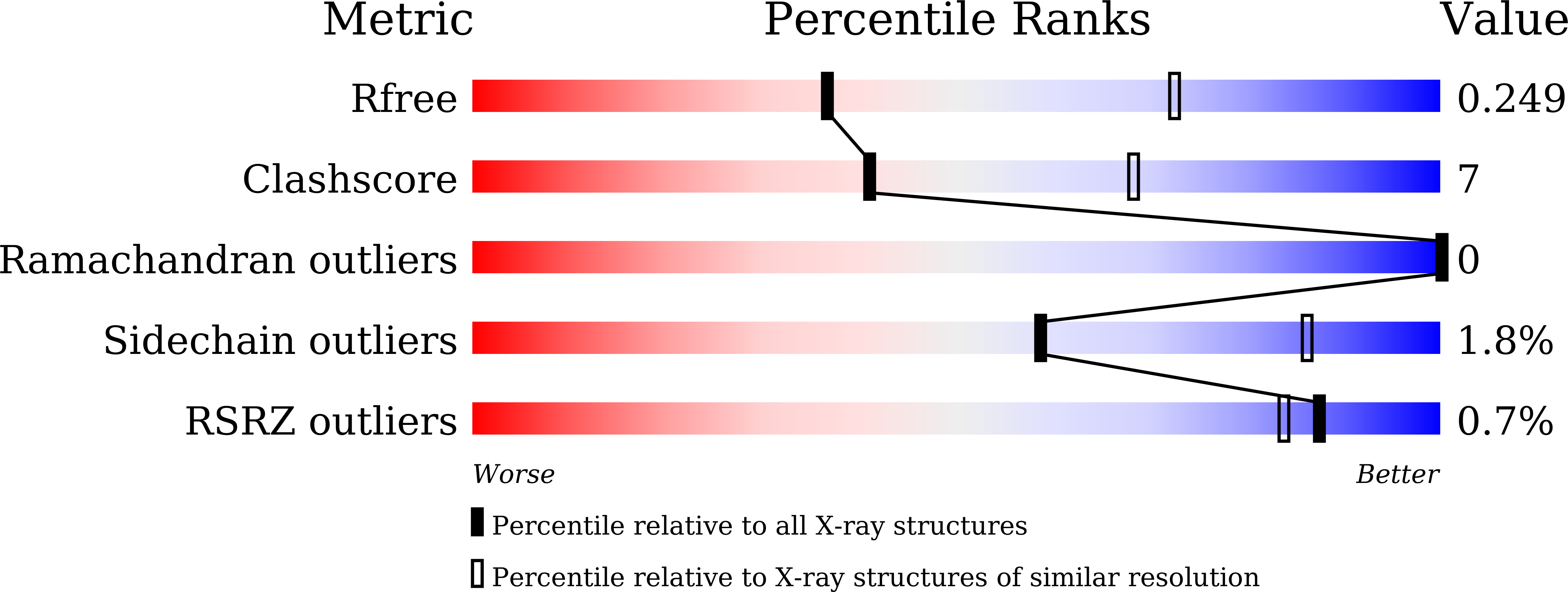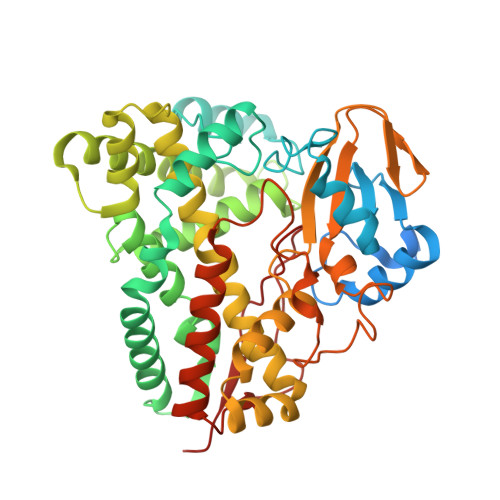Structural Basis for Selective Oxidation of Phosphorylated Ethylphenols by Cytochrome P450 Monooxygenase CreJ.
Dong, S., Chen, J., Zhang, X., Guo, F., Ma, L., You, C., Wang, X., Zhang, W., Wan, X., Liu, S.J., Yao, L.S., Li, S., Du, L., Feng, Y.(2021) Appl Environ Microbiol 87
- PubMed: 33712426
- DOI: https://doi.org/10.1128/AEM.00018-21
- Primary Citation of Related Structures:
7CCF - PubMed Abstract:
Selective oxidation of C-H bonds in alkylphenols holds great significance for not only structural derivatization in pharma- and biomanufacturing but also biological degradation of these toxic chemicals in environmental protection. A unique chemomimetic biocatalytic system using enzymes from a p -cresol biodegradation pathway has recently been developed. As the central biocatalyst, the cytochrome P450 monooxygenase CreJ oxidizes diverse p - and m -alkylphenol phosphates with perfect stereoselectivity at different efficiencies. However, the mechanism of regio- and stereoselectivity of this chemomimetic biocatalytic system remained unclear. Here, using p - and m -ethylphenol substrates, we elucidate the CreJ-catalyzed key steps for selective oxidations. The crystal structure of CreJ in complex with m -ethylphenol phosphate was solved and compared with its complex structure with p -ethylphenol phosphate isomer. The results indicate that the conformational changes of substrate-binding residues are slight, while the substrate promiscuity is achieved mainly by the available space in the catalytic cavity. Moreover, the catalytic preferences of regio- and stereoselective hydroxylation for the two ethylphenol substrates is explored by molecular dynamics simulations. The ethyl groups in the complexes display different flexibilities, and the distances of the active oxygen to H pro-S and H pro-R of methylene agree with the experimental stereoselectivity. The regioselectivity can be explained by the distances and bond dissociation energy. These results provide not only the mechanistic insights into CreJ regio- and stereoselectivity but also the structural basis for further P450 enzyme design and engineering. IMPORTANCE The key cytochrome P450 monooxygenase CreJ showed excellent regio- and stereoselectivity in the oxidation of various alkylphenol substrates. C-H bond functionalization of these toxic alkylphenols holds great significance for both biological degradation of these environmental chemicals and production of value-added structural derivatives in pharmaceutical and biochemical industries. Our results, combined with in vitro enzymatic assays, crystal structure determination of enzyme-substrate complex, and molecular dynamics simulations, provide not only significant mechanism elucidation of the regio- and stereoselective catalyzation mediated by CreJ but also the promising directions for future engineering efforts of this enzyme toward more useful products. It also has great extendable potential to couple this multifunctional P450 enzyme with other biocatalysts (e.g., hydroxyl-based glycosylase) to access more alkylphenol-derived high-value chemicals through environment-friendly biocatalysis and biotransformation.
Organizational Affiliation:
Shandong Provincial Key Laboratory of Synthetic Biology, CAS Key Laboratory of Biofuels, Qingdao Institute of Bioenergy and Bioprocess Technology, Chinese Academy of Sciences, Qingdao, Shandong, China.
















